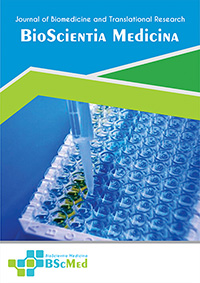Main Article Content
Abstract
Introduction. Indonesia ranks third in tuberculosis cases, with 23,000 new dual
drug-resistant tuberculosis patients. The delay in predicting tuberculosis resistance
occurs because sputum tools are not yet available. This study aimed to determine
the differences in chest x-rays for drug-sensitive multiple drug-resistant
tuberculosis in Palembang. Method. A case-control design to compare the
radiological characteristics of multiple drug resistance with drug-sensitive at
Palembang during January-July 2020. One hundred thirty-eight patients consisted
of cases of drug-sensitive tuberculosis and multidrug-resistant tuberculosis based
on the rapid molecular test that met the inclusion criteria, analyzed for
posteroanterior chest X-rays by a radiologist without knowing the diagnosis—
comparative chi-square using SPSS 22. Result. Multidrug resistance tuberculosis
had more extensive or moderate lesions than drug-sensitive tuberculosis 89.8% vs
72.4%. The multidrug-resistant group has more infiltrate detected, namely 84.1% vs
69.6% and cavity 37.6% vs 30.4%. Atelectasis and pleural effusion are common in
drug-resistant tuberculosis. Bivariate analysis showed that multidrug-resistant
tuberculosis lesion infiltrates compared to drug-sensitive tuberculosis with p =
0.025; OR 2,6 (CI 95% 1,1-6,0) sensitivity 85.5%, specificity 30.4%. Multivariate
analysis showed the presence of infiltrates p = 0.028; OR 2.58 (CI 95% 1.1-6.003).
Consolidation, nodules, cavities, fibrosis, atelectasis, pleural effusion were not
significant differences in the two groups. Conclusion. Multidrug-resistant
tuberculosis has a more expansive lesion, the presence of infiltrates and cavities that
is more dominant than drug-sensitive tuberculosis.
Keywords
Article Details
As our aim is to disseminate original research article, hence the publishing right is a necessary one. The publishing right is needed in order to reach the agreement between the author and publisher. As the journal is fully open access, the authors will sign an exclusive license agreement.
The authors have the right to:
- Share their article in the same ways permitted to third parties under the relevant user license.
- Retain copyright, patent, trademark and other intellectual property rights including research data.
- Proper attribution and credit for the published work.
For the open access article, the publisher is granted to the following right.
- The non-exclusive right to publish the article and grant right to others.
- For the published article, the publisher applied for the Creative Commons Attribution-NonCommercial-ShareAlike 4.0 International License.





